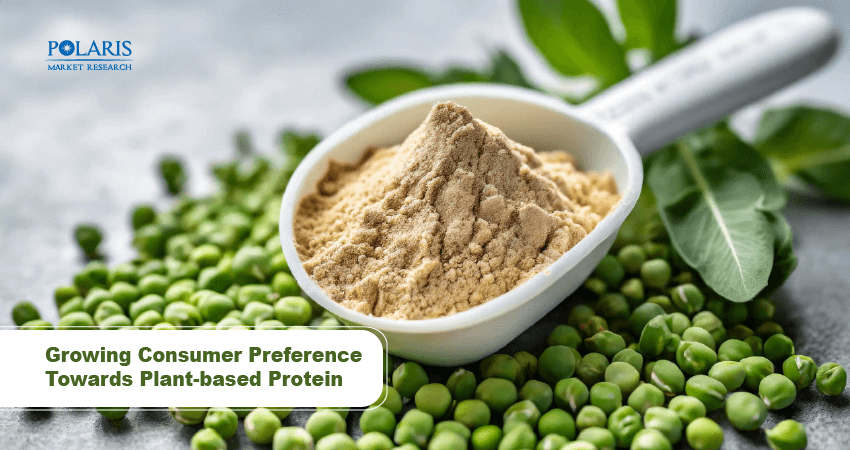Growing Consumer Preference Towards Plant-based Protein

The world is increasingly moving towards food sources that are clean and sustainable. Pea protein has become a leading choice among plant-based ingredients. Known for its high nutritional value and versatility, pea protein is increasingly being consumed by individuals seeking vegan and allergen-free protein sources.
This blog post explains all that you need to know about the pea protein market. It covers the essentials of pea protein and its applications. The key stats for the pea protein industry and the major growth drivers have also been covered.
Pea Protein: Introduction
Pea protein is made from whole yellow peas, which are high in protein and other muscle-building ingredients. Dry pea protein is a natural supplement created by extracting soluble pea protein from yellow split peas. It contains all of the essential amino acids that the body needs to function properly. It helps increase blood circulation and helps in weight loss, muscle maintenance, and blood sugar regulation.
Pea protein is a major source of iron. It's used to boost the protein content of foods such as smoothies and shakes, and it's naturally vegan and hypoallergenic, making it a good choice for almost any diet. Nine basic amino acids that the human body cannot manufacture are found in pea protein. Texturized vegetable protein has gained popularity amid the growing "free-from" trend, as it is fat- and cholesterol-free, which is influencing demand for texturized pea protein.
Pea Protein Market Metrics
The pea protein market is poised to witness sustained growth, according to our latest market analysis. The market for pea protein stood at USD 2.8 billion in 2024. It is projected to account for a CAGR of 15.20% between 2025 and 2034.
Pea Protein Growth Drivers
Pea protein demand has risen in recent years due to increased health consciousness, numerous health benefits, and rising demand for meat protein substitutes, propelling its development. Furthermore, factors such as the growing use of pea protein across various products, steady growth in the food and beverage industries, increased demand for organic foods, and advances in protein-based products have contributed to the rapid expansion of the global market. Food producers are focused on capturing new markets as customer interest in plant-based protein options grows.
Increasing Application Scope of Pea Protein
Pea proteins are widely used in the nutrition and health industries, where their functions are most needed. People's changing lifestyles lead to a variety of diseases due to poor nutrition. Pea protein improves brain health, eye health, heart health, muscle mass, weight control, and athletic efficiency when added to health supplements. The aging population, the growing health and wellness trend, and the rising prevalence of diseases are fostering its use in health supplements from the dietary supplements market.
Regional Scenario for Pea Protein Market
With the largest market share, North America dominated the global pea protein market. The market for pea protein in the region is expected to grow as the importance of a flexitarian diet among the majority of the population in countries such as the U.S. increases, driven by growing concerns about cardiovascular diseases linked to red meat consumption. The use of pea protein as a texture-improving agent in meat processing is increasing as manufacturing and meat-processing facilities improve. Increasing venture capital investments and the presence of major manufacturers support the Asia Pacific market's growth.
Pea Protein and Sustainability
Pea protein is known to be environmentally sustainable. Peas are naturally efficient crops. They need less water and can thrive in cooler climates. Their ability to fix nitrogen helps enrich the soil. This helps reduce reliance on chemical fertilizers and gives peas a much smaller environmental footprint than that of soy sources.
The greenhouse gas emissions and water usage of pea protein production are lower than those of animal agriculture. As such, pea protein is an important part of the global efforts to reduce carbon emissions in the food industry. Furthermore, peas are valuable in crop rotation and support the regenerative agriculture market.
Conclusion
Pea protein has changed from being a simple legume extract to becoming a popular source of nutrition. It has a good balance of amino acids and goes easy on the environment. Pea protein can also be used in various types of products. The key players in the pea protein market are increasingly focusing on research and improved production methods to increase the uptake of pea protein. As such, the consumption of pea protein is expected to rise in the years to come.

